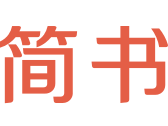pheatmap
一、 创建一个随机矩阵10x20
test = matrix(rnorm(200), 20, 10)
test[1:10, seq(1, 10, 2)] = test[1:10, seq(1, 10, 2)] + 3
test[11:20, seq(2, 10, 2)] = test[11:20, seq(2, 10, 2)] + 2
test[15:20, seq(2, 10, 2)] = test[15:20, seq(2, 10, 2)] + 4
colnames(test) = paste("Test", 1:10, sep = "")
rownames(test) = paste("Gene", 1:20, sep = "")
1.基本作图
pheatmap(test) #基本图
pheatmap(test, kmeans_k = 2) #将行聚为2类
pheatmap(test, scale = "row", clustering_distance_rows = "correlation") #标准化
pheatmap(test, color = colorRampPalette(c("navy", "white", "firebrick3"))(10))
#设置颜色,后面括号里的数字表示梯度
pheatmap(test, cluster_row = FALSE) #是否显示行的聚类
pheatmap(test, legend = FALSE) #是否显示图例
scale是指对数值进行均一化处理,在基因表达量的数据中,有些基因表达量极低,有些基因表达量极高,因此把每个基因在不同处理和重复中的数据转换为平均值为0,方差为1的数据,可以看出每个基因在某个处理和重复中表达量是高还是低,一般选择做row均一化。
2.显示色块的数值、文本
pheatmap(test, display_numbers = TRUE) #基本用法
pheatmap(test, display_numbers = TRUE, number_format = "%.1e")
# "%.1e"用科学计数法显示保留1位小数;"%.3f"用小数显示保留3位小数
pheatmap(test, display_numbers = matrix(ifelse(test > 5, "*", ""), nrow(test)))
#以*赋值矩阵> 5的色块
pheatmap(test, cluster_row = FALSE, legend_breaks = -1:4,
legend_labels = c("0", "1e-4", "1e-3", "1e-2", "1e-1", "1"))
#legend_breaks设置图例的显示范围,默认间隔为1;legend_labels重写刻度的标签, 需与legend_breaks同时使用。
3.调整色块或文本大小
pheatmap(test, cellwidth = 15, cellheight = 12, main = "Example heatmap",
fontsize = 8, filename = "test.pdf")
#参数分别表示:色块的宽度、色块的高度、标题、行列名
#及图例字体的大小、保存为当前工作目录下的图片的文件名
4.行列注释
首先创建annotation_col 与annotation_row
annotation_col = data.frame(
CellType = factor(rep(c("CT1", "CT2"), 5)),
Time = 1:5
rownames(annotation_col) = paste("Test", 1:10, sep = "")
annotation_row = data.frame(
GeneClass = factor(rep(c("Path1", "Path2", "Path3"), c(10, 4, 6)))
rownames(annotation_row) = paste("Gene", 1:20, sep = "")
显示行、列注释信息
pheatmap(test)
pheatmap(test, annotation_col = annotation_col)
pheatmap(test, annotation_col = annotation_col, annotation_legend = FALSE)
pheatmap(test, annotation_col = annotation_col, annotation_row =
annotation_row)
5.改变列名文本角度
pheatmap(test, annotation_col = annotation_col,
annotation_row = annotation_row, angle_col = "45")
pheatmap(test, annotation_col = annotation_col, angle_col = "0")
6.自定义注释色块的颜色
ann_colors = list(
Time = c("white", "firebrick"),
CellType = c(CT1 = "#1B9E77", CT2 = "#D95F02"),
GeneClass = c(Path1 = "#7570B3", Path2 = "#E7298A", Path3 = "#66A61E")
) #注意ann_colors是列表
pheatmap(test, annotation_col = annotation_col, annotation_colors = ann_colors, main = "Title")
pheatmap(test, annotation_col = annotation_col, annotation_row = annotation_row, annotation_colors = ann_colors)
pheatmap(test, annotation_col = annotation_col, annotation_colors = ann_colors[2])
7.切分热图
pheatmap(test, annotation_col = annotation_col, cluster_rows = FALSE, gaps_row = c(10, 14))
pheatmap(test, annotation_col = annotation_col, cluster_rows = FALSE, gaps_row = c(10, 14),
cutree_col = 2)
#gaps_row有效的前提是cluster_rows = F;cutree_col有效的前提是cluster_cols = T
8.自定义显示哪些行列的名字
labels_row = c("", "", "", "", "", "", "", "", "", "", "", "", "", "", "",
"", "", "Il10", "Il15", "Il1b")
pheatmap(test, annotation_col = annotation_col, labels_row = labels_row)
9.用距离矩阵的方法来聚类
drows = dist(test, method = "minkowski")
dcols = dist(t(test), method = "minkowski")
pheatmap(test, clustering_distance_rows = drows, clustering_distance_cols = dcols)
callback = function(hc, mat){
sv = svd(t(mat))$v[,1]
dend = reorder(as.dendrogram(hc), wts = sv)
as.hclust(dend)
pheatmap(test, clustering_callback = callback)
取消边框或更改其颜色
pheatmap(test, border_color = NA)
pheatmap(test, border_color = 'red')
三、参数调整:
1. 颜色参数:
默认值为colorRampPalette(rev(brewer.pal(n = 7, name ="RdYlBu")))(100),RdYlBu也就是Rd红色,Yi黄色,Bu蓝色的过度,则主调色为红黄蓝。
颜色大全网址:https://www.color-hex.com/color-names.html
2 数据变换参数:
scale,是指对数值进行均一化处理,在基因表达量的数据中,有些基因表达量极低,有些基因表达量极高,因此把每个基因在不同处理和重复中的数据转换为平均值为0,方差为1的数据,可以看出每个基因在某个处理和重复中表达量是高还是低,一般选择做row均一化。
clustering_method,表示聚类方法,值可以是hclust的任何一种,如"ward.D","single", "complete", "average", "mcquitty", "median", "centroid", "ward.D2"。
cluster_rows,表示行是否聚类,值可以是FALSE或TRUE
clustering_distance_rows,行距离度量的方法,如欧氏距离
cutree_rows,行聚类数
treeheight_row,行聚类树的高度,默认为50
gaps_row,对行进行分割,就不应对相应的行进行聚类
cluster_cols,表示列是否聚类,值可以是FALSE或TRUE
clustering_distance_cols,列距离度量的方法
cutree_cols,列聚类数
treeheight_col,列聚类树的高度,默认为50
gaps_col,对列进行分割,就不应对相应的列进行聚类
3.色度条--就是热图右上角那个小小的长方条
legend,逻辑值,是否显示色度条,默认为T
legend_breaks,显示多少个颜色数值段
legend_labels,对色度条上对应位置的字符进行修改
4.注释条
annotation = NA
annotation_colors,对标签的颜色进行修改
annotation_legend,是否显示标签注释条
annotation_row,数据框格式,用来定义热图所在行的注释条
annotation_names_row,逻辑值,是否显示行标签名称
annotation_col,数据框格式,用来定义热图所在列的注释条
annotation_names_col,逻辑值,是否显示列标签名称
5.其他修改参数
main,设置图的标题
fontsize,是设置所有除主图以外的标签的大小
number_color,字体的颜色
show_rownames,是否显示行名
fontsize_row,行名的字体大小
labels_row,X轴坐标名设置
show_colnames,是否显示列名
fontsize_col,列名的字体大小
labels_col,y轴坐标名设置
6.小格子参数设置--热图是由一个个的小四方格子组成的,每一个小格子代表一个基因在一个样本内的表达情况
fontsize_number,小格子中数字大小
display_numbers,是否在小格子中显示数字,逻辑值
number_format,小格子中数字显示形式,但仅有在display_numbers=T时才能使用
na_col,设置小格子为缺失值时的颜色
cellwidth,表示每个小格子的宽度
cellheight, 表示每个小格子的高度
7.输出文件参数设置,一般可以直接将画好的热图以png格式或者pdf格式进行写出
filename,输出图画的文件名
width,输出图画的宽度
height,输出图画的高度
